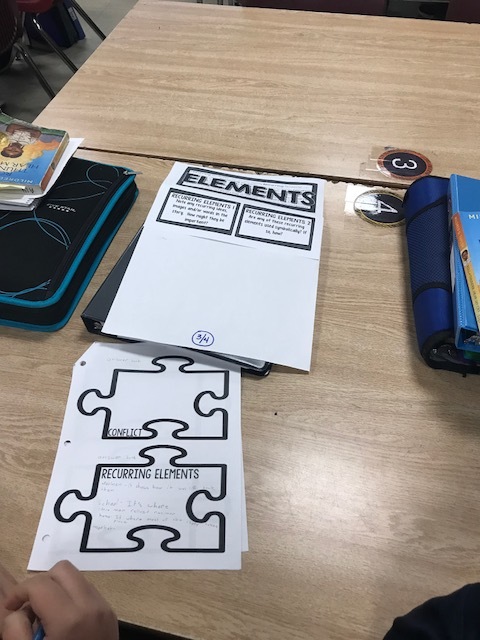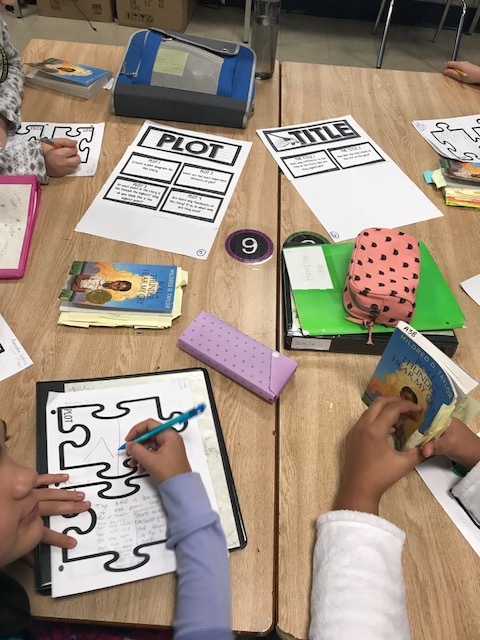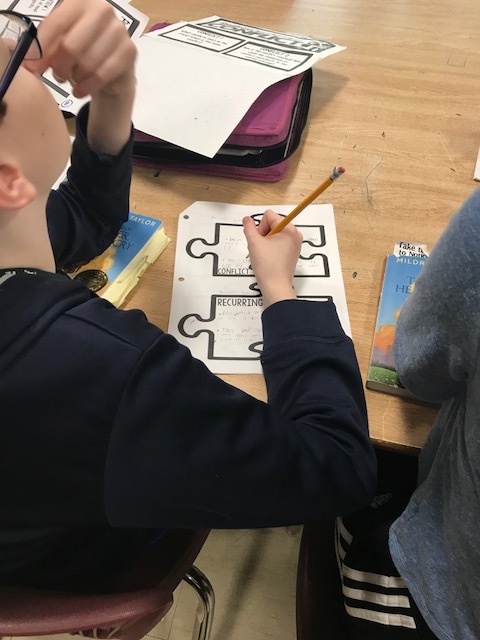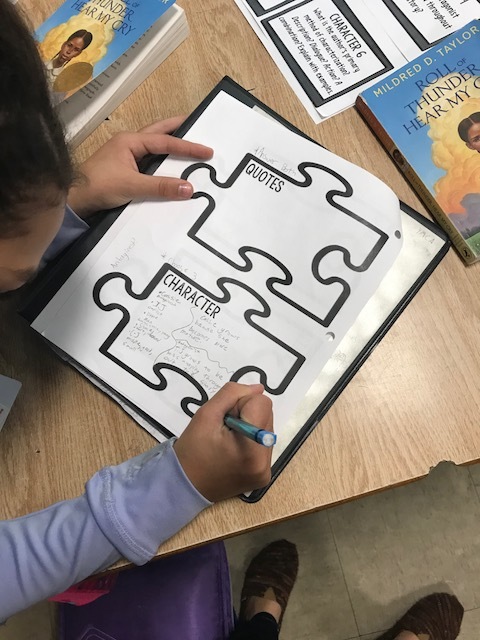Teaching Theme Using Classroom Stations
Theme Stations: Movement with Meaning
Today, I want to share some snaps of students who were working on "putting the puzzle pieces together" regarding theme. This is also a shoutout to the resource from Room 213 on Teachers Pay Teachers titled "Discovering Theme Learning Stations. I love stations. Whenever I can get students moving, I can. It is critical for engagement, and it is conducive to how they learn as young people (and old people, too). These theme stations had the concept of puzzle pieces. You could use them after any piece of text read; however, I am using them after we read the novel text Roll of Thunder, Hear My Cry by Mildred Taylor. Students are still trying to sort out plot elements and what they mean in sixth grade so I am having them rotate to each station with their book, and then look at the guiding questions at each station.
Lesson Setup:
1.) Students completed reading a novel text.
2.) Students start having discussions about the novel text in small fires and in small groups.
3.) Introduce the idea that theme is not necessarily a guess. Clues lead us to understand what the theme is in a given text.
Plot Elements + Inference = Theme.
4.) Students rotate through all of the plot elements with their books.
Plot & Title
Recurring Elements
Characters
Setting
Quotes
Point of View & Conflict
Note: There are 8 listed. I have six tables. I combined some to make groups.
5.) Students complete a John Collins type 3 writing where they analyze the theme of the piece of text. They must provide evidence from the plot elements. This will also get them ready for their first argumentative essay.
6.) Students are also going to have some follow up on definitions of plot elements on Quizlet. They have been taught the vocabulary for these terms, but they need reinforcement before we move into essay writing.
Snaps
Today, I want to share some snaps of students who were working on "putting the puzzle pieces together" regarding theme. This is also a shoutout to the resource from Room 213 on Teachers Pay Teachers titled "Discovering Theme Learning Stations. I love stations. Whenever I can get students moving, I can. It is critical for engagement, and it is conducive to how they learn as young people (and old people, too). These theme stations had the concept of puzzle pieces. You could use them after any piece of text read; however, I am using them after we read the novel text Roll of Thunder, Hear My Cry by Mildred Taylor. Students are still trying to sort out plot elements and what they mean in sixth grade so I am having them rotate to each station with their book, and then look at the guiding questions at each station.
Lesson Setup:
1.) Students completed reading a novel text.
2.) Students start having discussions about the novel text in small fires and in small groups.
3.) Introduce the idea that theme is not necessarily a guess. Clues lead us to understand what the theme is in a given text.
Plot Elements + Inference = Theme.
4.) Students rotate through all of the plot elements with their books.
Plot & Title
Recurring Elements
Characters
Setting
Quotes
Point of View & Conflict
Note: There are 8 listed. I have six tables. I combined some to make groups.
5.) Students complete a John Collins type 3 writing where they analyze the theme of the piece of text. They must provide evidence from the plot elements. This will also get them ready for their first argumentative essay.
6.) Students are also going to have some follow up on definitions of plot elements on Quizlet. They have been taught the vocabulary for these terms, but they need reinforcement before we move into essay writing.










